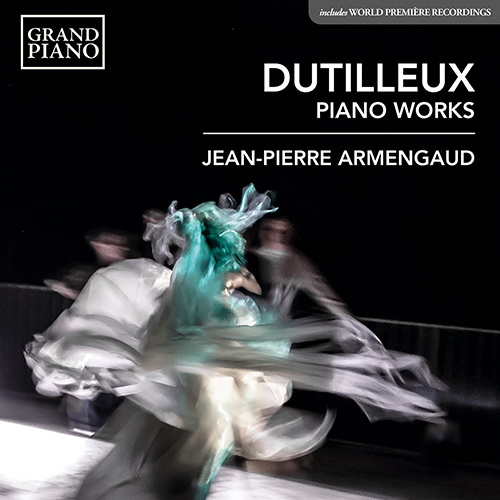
About this Release
DUTILLEUX, HENRI (1916–2013)
Piano Works
- Jean-Pierre Armengaud, piano
The music in this album spans a forty-year period from 1948 to 1988 and reflects Dutilleux’s stylistic development as a composer. He considered the Sonata to be the first main work in his catalogue and it represents a turning away from tradition and embraces the transformative musical explorations of the day. The Three Préludes are pieces of concentrated atmospheres, ‘a kind of study of timbres’, in the composer’s words, and each are dedicated to a renowned pianist: No. 1 to Arthur Rubinstein, No. 2 to Claude Helffer, and No. 3 to Eugene Istomin. Dutilleux’s lively music for the ballet Le Loup (‘The Wolf’) is heard here in a première recording of the original piano solo version.
This recording was made on a modern instrument: Steinway, Model D
Tracklist
|
Piano Sonata (1948) (00:22:00 )
|
|
1
I. Allegro con moto (00:08:32)
|
|
2
II. Lied: Assez lent - Un poco più mosso (00:06:27)
|
|
3
III. Choral et Variations (00:11:38)
|
|
Le loup (The Wolf) (version for piano) (1953) (00:29:00 )
|
|
4
Allegro - Tableau I: La place du village, aux abords d'une forêt (A village square, on the edge of a forest) (00:01:33)
|
|
5
Tableau I: Premier danse de la petite Bohémienne (The gypsy girl's first dance) (00:00:42)
|
|
6
Tableau I: Entrée de la noce (Entrance of the wedding party) (00:00:23)
|
|
7
Tableau I: Deuxième danse de la petite Bohémienne (The gypsy girl's second dance) (00:01:19)
|
|
8
Tableau I: Troisième danse de la petite Bohémienne (The gypsy girl's third dance) (00:01:34)
|
|
9
Tableau I: La petite Bohémienne seule (The gypsy girl alone) (00:01:46)
|
|
10
Tableau I: Tempo I - Animé (00:01:56)
|
|
11
Tableau I: Interlude (00:00:31)
|
|
12
Tableau II: Giocoso - Più lento e calmo - Un peu animé (00:03:51)
|
|
13
Tableau II: Adage: Large - Poco animando (00:04:10)
|
|
14
Tableau II: Vivace - Più moderato - Più vivo (00:02:18)
|
|
15
Tableau II: Interlude (00:00:58)
|
|
16
Tableau III: Le loup et la belle dans la forêt (Beauty and the wolf in the forest) (00:04:40)
|
|
17
Tableau III: Danse de mort du Loup (The wolf's dying dance) (00:02:58)
|
|
18
Tableau III: Rideau (Curtain) (00:00:19)
|
|
3 Préludes (1988) (00:15:00 )
|
|
19
No. 1. D'ombre et de silence (00:03:04)
|
|
20
No. 2. Sur un même accord (00:03:38)
|
|
21
No. 3. Le jeu des contraires (00:07:54)
|
The Artist(s)
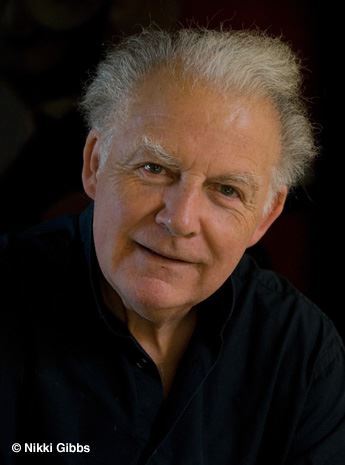 Jean-Pierre Armengaud is considered a leading interpreter of French music and a specialist in impressionist and expressionist repertoire, and is renowned for his ‘fluidly supple playing, his round and mellow tone’ (Classica). He has recorded several complete collections, of piano music by Debussy, Satie, Roussel, Poulenc, Dutilleux and Denisov. Armengaud has appeared in major concert halls around the world, performing in over 40 countries. His albums for Naxos and Grand Piano feature music by Debussy, Roussel, Poulenc, Aubert, d’Indy and others, and he has a particular interest in Henri Dutilleux. He has been director for musical programming at Radio France and is associate professor at the ParisSorbonne University and professor emeritus at the University of Évry Val d’Essonne at Paris-Saclay University.
Jean-Pierre Armengaud is considered a leading interpreter of French music and a specialist in impressionist and expressionist repertoire, and is renowned for his ‘fluidly supple playing, his round and mellow tone’ (Classica). He has recorded several complete collections, of piano music by Debussy, Satie, Roussel, Poulenc, Dutilleux and Denisov. Armengaud has appeared in major concert halls around the world, performing in over 40 countries. His albums for Naxos and Grand Piano feature music by Debussy, Roussel, Poulenc, Aubert, d’Indy and others, and he has a particular interest in Henri Dutilleux. He has been director for musical programming at Radio France and is associate professor at the ParisSorbonne University and professor emeritus at the University of Évry Val d’Essonne at Paris-Saclay University. The Composer(s)
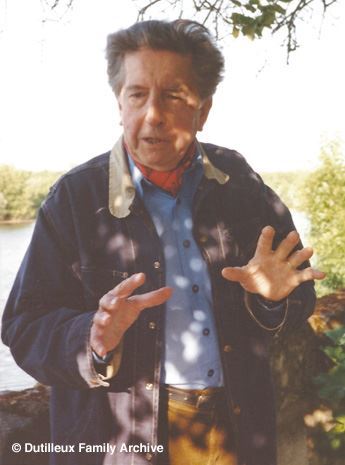 Born in Angers on 22 January 1916, Henri Dutilleux grew up in Douai, studying piano, harmony and counterpoint at the conservatoire there with Victor Gallois, before moving to Paris in 1933. At the Paris Conservatoire he studied with the Gallon brothers, as well as with Maurice Emmanuel and Henri Büsser, winning the Prix de Rome in 1938 with the cantata L’anneau du roi. Returning to France at the outbreak of war, he worked at the Paris Opéra; then, in 1945, began an 18-year tenure as director of music productions at Radio France. From 1963 he devoted himself to composition, while being in demand as a guest teacher in France and at summer schools abroad. He died in Paris on 22 May 2013.
Born in Angers on 22 January 1916, Henri Dutilleux grew up in Douai, studying piano, harmony and counterpoint at the conservatoire there with Victor Gallois, before moving to Paris in 1933. At the Paris Conservatoire he studied with the Gallon brothers, as well as with Maurice Emmanuel and Henri Büsser, winning the Prix de Rome in 1938 with the cantata L’anneau du roi. Returning to France at the outbreak of war, he worked at the Paris Opéra; then, in 1945, began an 18-year tenure as director of music productions at Radio France. From 1963 he devoted himself to composition, while being in demand as a guest teacher in France and at summer schools abroad. He died in Paris on 22 May 2013. Reviews

“…faithful interpretations of the Sonate and the Three Preludes… compelling reason to acquire it.” – Diapason

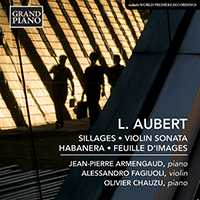
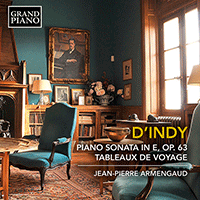
 Grand Piano has gained a reputation for producing high quality recordings of rare keyboard gems. Dedicated to the exploration of undiscovered piano repertoire, the label specialises in complete cycles of piano works by many lesser-known composers, whose output might otherwise have remained unknown and unrecorded.
Grand Piano has gained a reputation for producing high quality recordings of rare keyboard gems. Dedicated to the exploration of undiscovered piano repertoire, the label specialises in complete cycles of piano works by many lesser-known composers, whose output might otherwise have remained unknown and unrecorded.






